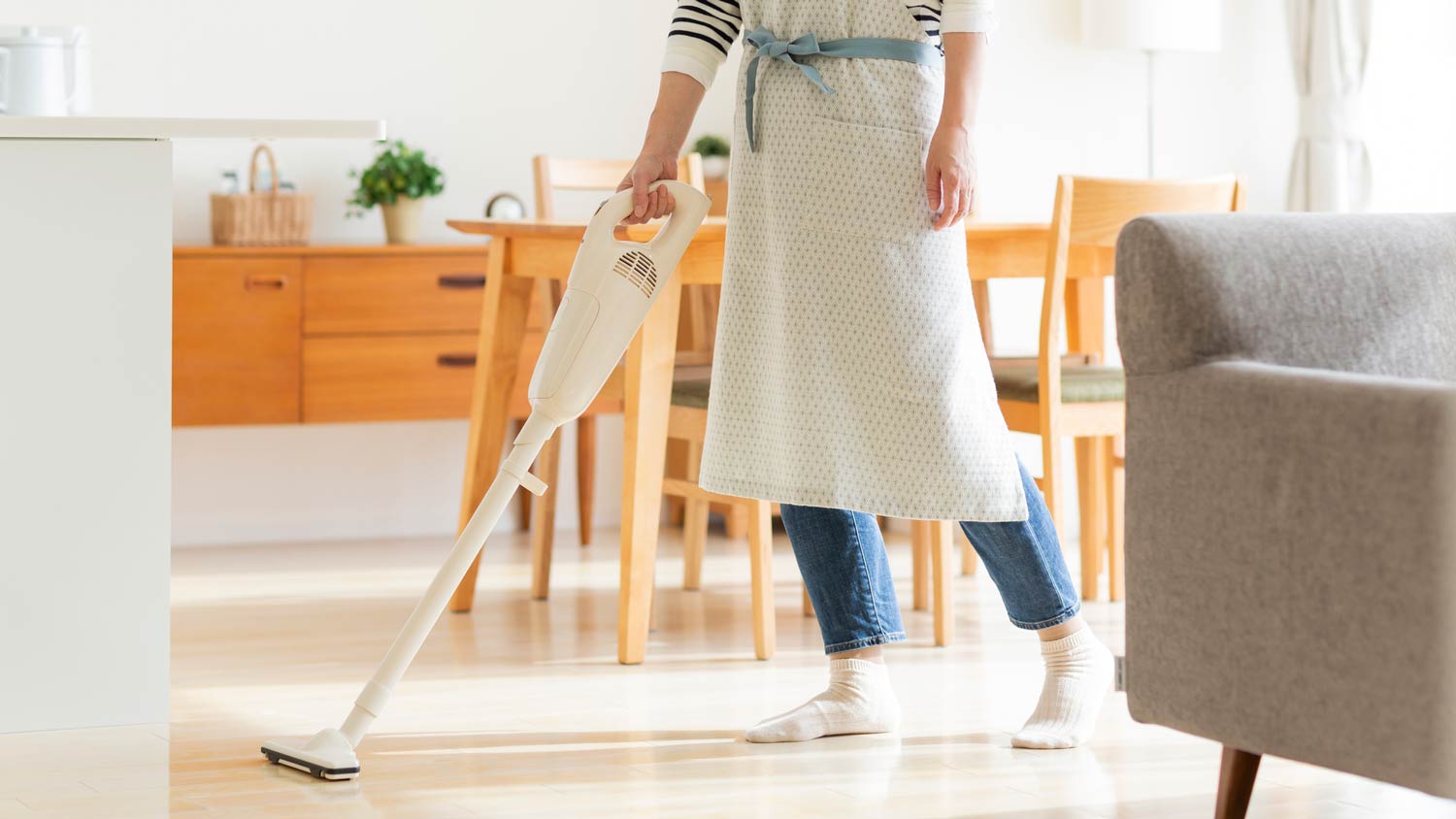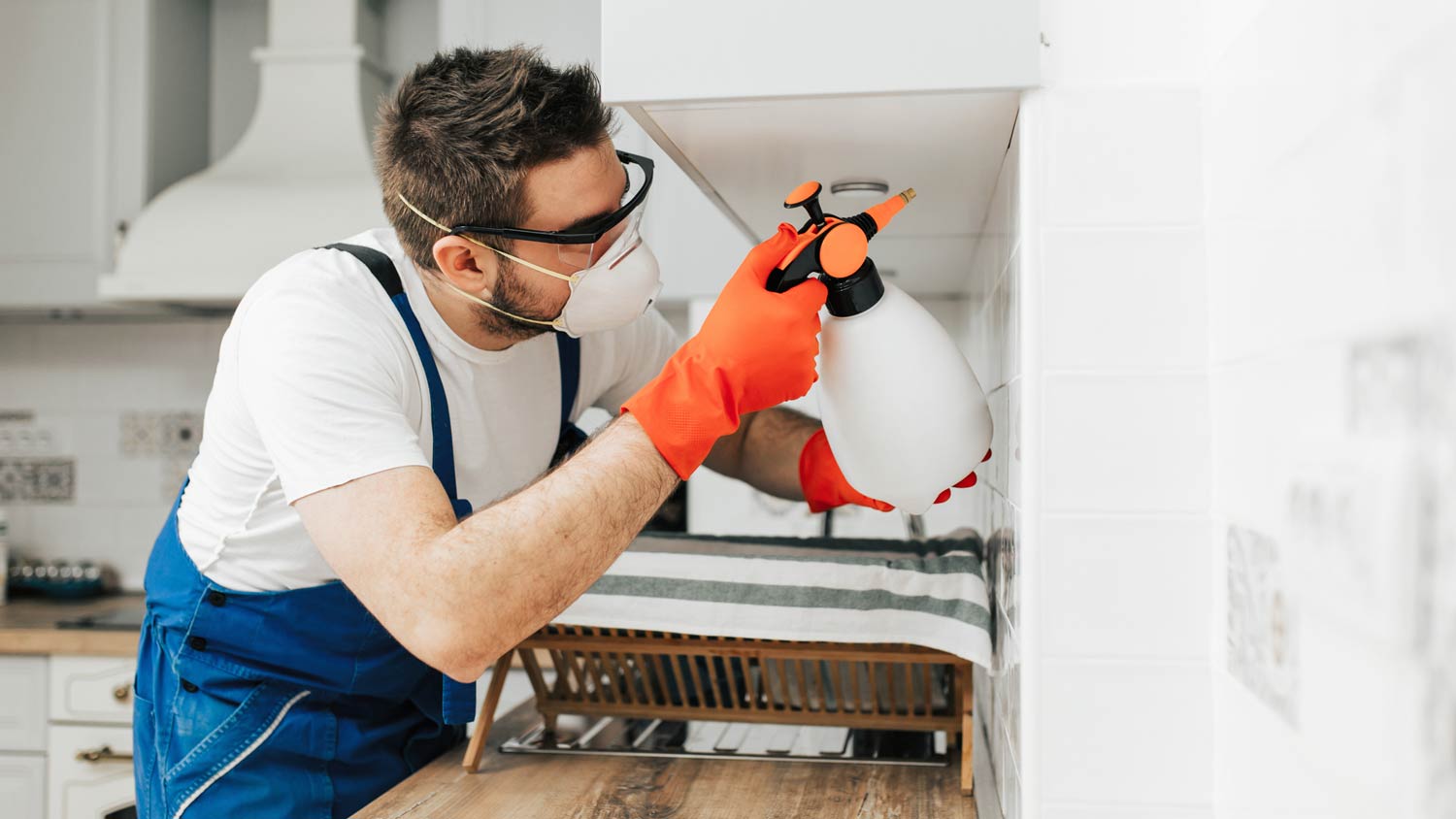
Bats may have their benefits, but you don't want them taking up residence in your home. This guide will help you understand bat removal costs.
Rid your home of the worst type of roaches


While hiring a pro to get rid of German cockroaches costs between $300 and $700 for a moderate infestation, a professional can complete the job in a safer, more efficient manner.
If you have a minor infestation, you may be able to go the DIY route. But if your infestation is serious, a professional pest control company is your best bet, especially if you want to prevent the issue from escalating.
Professionals use commercial-grade treatments and baits that are often more effective against German cockroach colonies than store-bought solutions.
DIY attempts may fail to eliminate all roaches or miss hidden nests, increasing the risk of reinfestation.
It can take anywhere from a couple of weeks to several months to get rid of German roaches for good, making pest control services worthwhile if you value your free time.
Many homeowners are familiar with cockroach basics: The invasive bugs scurry around in the dark, searching kitchens and trash cans for food while causing a mess. It’s essential to learn how to get rid of German cockroaches because they are the most common type of roach in the U.S. In fact, although they probably originated in Africa, you can find them all across the world.
This troublesome species is infamously hard to eradicate, so catching them early is key. Here’s what you need to know about removing German cockroaches from your home.
If you spot two or more roaches in your home, it's time to call in a professional exterminator. Don't hesitate to take pest control action to prevent the infestation from growing.
German cockroaches love the protection that your home provides. Unfortunately, that means they’ll find plenty of ways to make your house their home, too. Once German roaches get inside, they can be very difficult to drive away. Even in a very clean house, this species excels at finding scraps to eat, from pet food and leather to book glue. Common causes of infestations include:
Infested borrowed or secondhand furniture
Old luggage or boxes brought from open areas like sheds to indoor spaces
Large boxes and packaging brought from warehouses
Poorly secured plumbing lines
Small gaps in insulation around crawl spaces or plumbing
Infestations from a nearby apartment or storage room that spread to your home
Pest control needs will change with the seasons due to temperature. In the spring, when water temperatures rise mosquitoes hatch, occasional invaders seek shelter within structures during the fall, and freezing temperatures in the winter drive rodents inside of structures.
Since they breed so fast, it’s not enough to smash every German cockroach you see and expect them to go away. Instead, you can adopt a two-pronged DIY strategy to deal with them, initial eradication efforts, and long-term prevention. These steps will show how to get rid of roaches.

Set your clock to spring cleaning, no matter the time of year, because dealing with cockroaches starts by removing them and their dirt. Focus on areas with high German cockroach frequency, including under the sink, in the pantry, by your trash cans, and in your kitchen cabinets, among other spots.
Fortunately, you don’t have to kill roaches one by one.
1. The best way to remove them is with a high-suction vacuum cleaner, preferably a heavy-duty, workshop-friendly model. Suck all the cockroaches and their droppings away, and thoroughly clean any spots where they may be hiding.
2. Along the way, you’ll want to remove cartons, furniture, bottles, cans or bins, and any other potential hiding spots for roaches.
3. Then, quickly transfer your debris to a sealable bag, seal it shut, and transfer it to an outdoor sealed trash bin. If you get your trash collected,
4. It's a smart idea to arrange this project ahead of trash day so the roaches get picked up as quickly as possible.
5. Use a general household cleaner and thoroughly wipe down all surfaces so that the roaches’ bacteria and dropping won’t pose health hazards.
Discourage German cockroaches from returning by removing anything they’re attracted to in your home. These cockroaches love any starch like chips, crackers, cookies, cereal, flour, and crumbs. They also love sugary foods, from spilled sugar in your cupboard to an open bag of dried fruit. Although rarer, the roaches are also attracted to meat, which can be an issue near trash cans.
Together, those foods cast a wide net. Deal with it by thoroughly cleaning your kitchen, cupboards, pantry, and dining areas. Clean up every trace of residue or bit of leftover food that’s around. The good news is that you probably already started this process when you cleared out the cockroaches, so finishing it up is less bothersome.
German cockroaches may eat almost anything, but they’re especially attracted to leftover food and food packaging. Be sure to carefully secure trash both inside and outside the home. Don’t leave trash open; cover it with lids at all times. Clean up any fragments of food after eating and don’t leave any trash out overnight.
German roaches can crawl up through your sink drains, especially if you live in an area prone to them. While that’s a gross scenario, it’s much worse if they start infesting a kitchen or bathroom. Make sure to cover your drains, especially your kitchen drains, by a drain filter. This measure helps catch junk and keeps roaches from entering the kitchen. Set them up at night when the cockroaches are most likely to creep out.
Cockroaches like moisture and stay in humid places. You can fix humidity issues in several ways by implementing the following:
Adding ventilation to damp basements
Using a dehumidifier in moist areas like the basement
Opening attic vents or adding new attic vents
Fixing plumbing leaks or condensation on plumbing pipes
Checking drainage for AC systems and similar units to make sure it’s clear and working
German cockroaches can easily crawl inside through gaps around pipes or wiring in the walls, under worn-out weatherstripping, or cracks in insulation or ductwork. A key part of stopping a roach problem is a full inspection of these distant parts of your house and sealing any discovered roach entrances.
Pest control companies may offer services to use foam insulation or similar solutions to block any entry points. You can also attempt similar DIY methods yourself if you don’t mind crawlspace work.
Follow these guidelines for getting rid of German cockroaches.
Insecticides don’t always work well against German cockroaches, but alternatives are much more effective. Gel bait traps help capture roaches reliably, and work to pick up any stragglers you may have missed during your cleaning session. Pick up gel traps, which are readily available at local home improvement sections, and set them up in areas frequented by roaches. Check them every few days and replace them if necessary for the next couple of weeks.
Another option that keeps roaches away is an insecticide barrier. Natural roach repellents are typically made out of non-toxic substances like diatomaceous earth, which you can sprinkle in a line around target areas. This treatment helps protect trash cans, open doors in the summertime, and similar situations. While it’s not toxic for people or pets, diatomaceous earth will cut and dehydrate insects, warding them off from exploring in specific places.
Boric acid is a potent poison for cockroaches and it can spread through an infestation quickly, especially when combined with the tactics above. You can find boric acid in gel or powder, and some solutions include or recommend adding a sugar mixture to help attract roaches more easily.
Boric acid works best when used directly where cockroaches linger or pass through. Sprinkle or squeeze it in corners, under appliances, under sinks, along basement walls or baseboards, and other places roaches frequent. Once the infestation is gone, plan vacuum up the boric acid. Be sure to avoid using boric acid in places accessible to children and pets to avoid accidental ingestion.
Insect growth regulators (IGRs) are a special type of pesticide that inhibits the life cycle of roaches, preventing them from reproducing. IGRs are available as traps, gels, sprays, and other forms. It’s an effective option for long-term control when combined with other methods, and it avoids the direct application of more toxic pesticides.
IGRs are most commonly used in commercial buildings. However, you can find DIY forms, and in some cases pest control companies may recommend IGRs as part of an extermination strategy for your home.
If the roaches keep coming back and nothing seems to stop their numbers from growing, it’s time to call in professional exterminators. Pest control companies have the experience to find where roaches are coming from and create a multi-pronged approach to deal with the problem more permanently. Look for pest exterminators near you and arrange for an inspection and quote to learn more.
Once your chosen removal method is in place, it’s time to sit back and watch. Keep track of your traps and bait stations to make sure they are effective. Continue to clear out any cockroaches (remember not to crush them, which can spread disease more easily). Clean out cockroach spoor or dead bodies frequently.
If you hired an exterminator, it’s a good idea to arrange for a second check-up visit. After several weeks, you should see your cockroach problem clear up with. If you don’t see German roaches slowly but surely disappearing, it’s time to call the experts or arrange for additional steps.

Reinvent your kitchen, pantry, and trash so cockroaches won’t have access to any food in the future. Make your home a crumb-free zone. Effective steps include:
1. Buy a set of plastic storage bins with sealable lids for all your cooking ingredients, as well as cereal, chips, and snacks. Stop re-rolling the original bag, and instead transfer leftover goods to sealed containers for future use. Don’t leave any food containers even slightly open.
2. Transfer fruit and veggies to the fridge instead of leaving them out on counters or tables. The same is true for any other type of food, such as butter or bowls of snacks.
3. Choose trash cans with tight-fitting lids to discourage roaches and all other pests. Do not leave trash, especially bags of food, beside the trash can instead of inside it.
4. Feed your pets in easy-to-clean areas. Do not leave pet food out after meal time, especially overnight. Clean up any spilled kibble or other remains after your pet finishes eating.
5. Clean dirty dishes right after eating, or transfer them to a closed dishwasher. Wipe down counters and tables after eating to remove any remaining crumbs.
6. Search for cracks or gaps that could lead outside, especially in your attic, garage, around windows, and even in crawl spaces. A tube or caulk or weather-stripping can seal these spaces and stop pests from entering.
7. If you found moisture sources while cleaning up German cockroaches, arrange repairs for any leaks or other problems to remove the moisture. If your home struggles with intense humidity, consider investing in a dehumidifier.

If you follow the steps above, you have a good chance of removing a minor infestation and keeping German cockroaches from returning. However, sometimes you need to escalate the situation and hire a pest control specialist to remove major infestations.
If German cockroaches keep returning even after you clean them out repeatedly, they may be buried deeper in the building or have access points that you didn’t spot. That’s a sign to contact local pest control and ask them for help.
A professional pest control company will conduct a thorough inspection, digging into the darkest places like crawl spaces and wall cracks to find where roaches are hiding. They can set bait traps, gels, and even caulk-like deterrents to get the infestation under control, along with advice on what to do next.
Prices vary based on techniques and how much work professionals do. The average cockroach exterminator cost currently ranges between $300 and $700 for a moderate infestation. However, very large infestations, especially those in commercial buildings or apartments, may cost thousands of dollars (up to $8,000) to fully remove.
From average costs to expert advice, get all the answers you need to get your job done.

Bats may have their benefits, but you don't want them taking up residence in your home. This guide will help you understand bat removal costs.

If you have a serious rodent problem, you may need to know the cost of hiring a rat exterminator. We can help you estimate prices and control costs.

How much does a gnat exterminator cost? The answer depends on the method of treatment and the level of infestation. Find out what plays into your budget.

Your pets may pick up fleas in the yard and spread them through the house. Learn how to get rid of fleas in your yard to treat the problem at its source.

Even if you don't fear spiders, catching these arachnids in your home is no fun. Learn how to get rid of spiders and keep them out.

Is it a common house spider or a brown recluse? Learn how to identify a brown recluse spider so you know how to handle it.